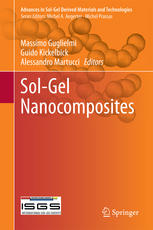

Most ebook files are in PDF format, so you can easily read them using various software such as Foxit Reader or directly on the Google Chrome browser.
Some ebook files are released by publishers in other formats such as .awz, .mobi, .epub, .fb2, etc. You may need to install specific software to read these formats on mobile/PC, such as Calibre.
Please read the tutorial at this link: https://ebookbell.com/faq
We offer FREE conversion to the popular formats you request; however, this may take some time. Therefore, right after payment, please email us, and we will try to provide the service as quickly as possible.
For some exceptional file formats or broken links (if any), please refrain from opening any disputes. Instead, email us first, and we will try to assist within a maximum of 6 hours.
EbookBell Team

5.0
18 reviewsThis book provides comprehensive coverage of nanocomposite materials obtained by the sol-gel method, from synthesis to applications and including design tools for combining different properties. Sol-gel nanocomposites are of great interest in meeting processing and application requirements for the development of multifunctional materials. These materials are already commercialized for a number of applications from scratch-resistant and anti-adhesive coatings to optical materials with active and passive properties. Biomedical applications, holographic recordings, fuel cells and hydrogen storage, resists and catalysts are among the potential uses. The novel mechanical, optical and electronic properties of nanocomposite materials depend not only on the individual component materials, but also on their morphology and nanoscale interfacial characteristics. Sol-gel is a highly versatile method for obtaining both the matrix and the filler of the nanocomposite and for chemically adjusting the interface to optimize structure and properties. Although nanocomposites are widely discussed in the literature, the focus has been mainly on polymer nanocomposites. This book addresses nanocomposites based on inorganic or hybrid organic-inorganic matrices, with an emphasis on the scientific principles which are the basis for nanocomposite sol-gel synthesis and applications. A didactic approach is followed, with different topics developed from a fundamental point of view together with key examples and case studies.